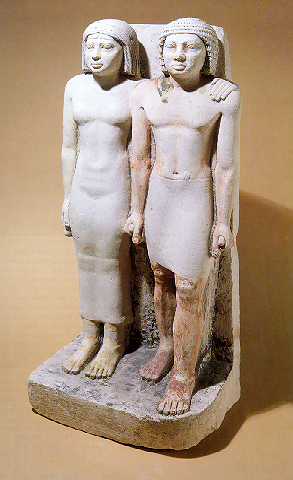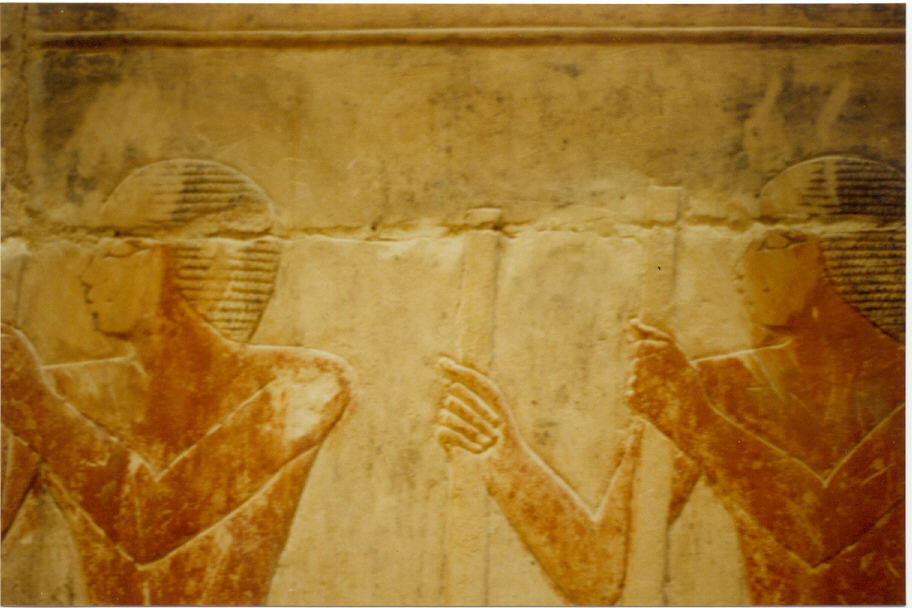- Aug 28, 2015
- 6,914
- 1,216
“A 2001 Update”
Prof. Manu Ampim
The “Vanishing Evidence” series is a general summary of years of detailed observation and research. The full documentation supporting the conclusions expressed in this series of articles, including dozens of photographs, will be published in my forthcoming book, Modern Fraud: The Forged Ancient Egyptian Statues of Ra-Hotep and Nofret. I make no attempt here to “prove” such a complicated case as forgeries and the deliberate destruction of African artifacts in just a few short articles. Rather, this series is simply a preliminary report on my findings, which will be given extensive treatment in my book Modern Fraud. - MA
SCOPE OF “THE VANISHING EVIDENCE” SERIES
I originally wrote "The Vanishing Evidence of Classical African Civilizations" series in The Gaither Reporter in 1995-1996. The 3-part series documents the unintentional human-aided deterioration, as well as the deliberate and massive alteration, mutilation, and destruction of ancient Egyptian artifacts. The series covers three broad categories of this vanishing evidence: the Temple Evidence (part I), the Tomb Evidence (part II), and the Museum Evidence (part III). Before writing the series, I had meticulously studied artifacts and images at temples, tombs, pyramids, museums, and ancient residential sites throughout Egypt and Nubia (1990, 1994-1995). I also carefully examined ancient Egyptian and Nubian artifacts at nearly all of the major museums, institutes, and libraries in eleven European countries (1989-1990), and in dozens of cities throughout the U.S. and Canada (1991-1992). Overall, I painstakingly studied well over a million images and artifacts before writing the “The Vanishing Evidence” series.
My initial goal was simply to follow the path of research outlined by the eminent scholar, Dr. Chancellor Williams in The Destruction of Black Civilization (1974), and conduct primary research on ancient Black civilizations. As Williams pointed out, the accurate knowledge of African science, social organization, and advanced spiritual systems can only be known from an unbiased first-hand study of the history and artifacts. Though I began my extensive multi-country research tour with a mission of documenting the specific details of the advanced African civilizations of ancient Egypt and Nubia, a quite different and unexpected theme emerged in every region that I studied. I was struck by the specific patterns of deliberate alterations and defacement of the artifacts. These patterns became clear after I had visited the initial group of European museums. What I noticed most was that these acts were more than simply knocking off the noses of statues, they involve a much broader assault on ancient Black images.

The pair statue from the Tomb of Ikhetneb has lost most of its original paint on the faces and upper body of the two images, while much of the original paint on the legs and feet still survive. It seems evident that the darker paint has been deliberately erased on the face and upper body, thus giving the images the illusion of a white-skin appearance.
Read more
http://www.raceandhistory.com/manu/update.htm
Prof. Manu Ampim
The “Vanishing Evidence” series is a general summary of years of detailed observation and research. The full documentation supporting the conclusions expressed in this series of articles, including dozens of photographs, will be published in my forthcoming book, Modern Fraud: The Forged Ancient Egyptian Statues of Ra-Hotep and Nofret. I make no attempt here to “prove” such a complicated case as forgeries and the deliberate destruction of African artifacts in just a few short articles. Rather, this series is simply a preliminary report on my findings, which will be given extensive treatment in my book Modern Fraud. - MA
SCOPE OF “THE VANISHING EVIDENCE” SERIES
I originally wrote "The Vanishing Evidence of Classical African Civilizations" series in The Gaither Reporter in 1995-1996. The 3-part series documents the unintentional human-aided deterioration, as well as the deliberate and massive alteration, mutilation, and destruction of ancient Egyptian artifacts. The series covers three broad categories of this vanishing evidence: the Temple Evidence (part I), the Tomb Evidence (part II), and the Museum Evidence (part III). Before writing the series, I had meticulously studied artifacts and images at temples, tombs, pyramids, museums, and ancient residential sites throughout Egypt and Nubia (1990, 1994-1995). I also carefully examined ancient Egyptian and Nubian artifacts at nearly all of the major museums, institutes, and libraries in eleven European countries (1989-1990), and in dozens of cities throughout the U.S. and Canada (1991-1992). Overall, I painstakingly studied well over a million images and artifacts before writing the “The Vanishing Evidence” series.
My initial goal was simply to follow the path of research outlined by the eminent scholar, Dr. Chancellor Williams in The Destruction of Black Civilization (1974), and conduct primary research on ancient Black civilizations. As Williams pointed out, the accurate knowledge of African science, social organization, and advanced spiritual systems can only be known from an unbiased first-hand study of the history and artifacts. Though I began my extensive multi-country research tour with a mission of documenting the specific details of the advanced African civilizations of ancient Egypt and Nubia, a quite different and unexpected theme emerged in every region that I studied. I was struck by the specific patterns of deliberate alterations and defacement of the artifacts. These patterns became clear after I had visited the initial group of European museums. What I noticed most was that these acts were more than simply knocking off the noses of statues, they involve a much broader assault on ancient Black images.

The pair statue from the Tomb of Ikhetneb has lost most of its original paint on the faces and upper body of the two images, while much of the original paint on the legs and feet still survive. It seems evident that the darker paint has been deliberately erased on the face and upper body, thus giving the images the illusion of a white-skin appearance.
Read more
http://www.raceandhistory.com/manu/update.htm









 ... please make yourself at home ...
... please make yourself at home ... 